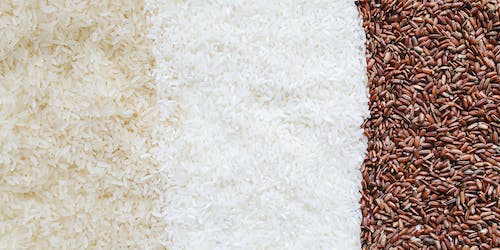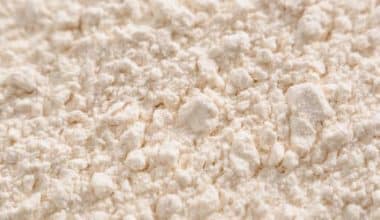Rice farming is a successful business that may be started immediately in Nigeria. This is due to the fact that it is the most widely consumed staple meal around the globe, particularly in Asia and Africa. Rice is Nigeria’s most popular staple cuisine. This shows that any rice-related firm, whether rice cultivation, hulling, or wholesale distribution, would have a ready market for its goods or services.
Let’s look at the rice distribution company, including why you should create one and how to get started and become a large-scale wholesale rice distributor in Nigeria.
Rice Farming
Rice production, like other agricultural businesses, is capital-intensive but profitable. When compared to other agricultural products, it has one of the highest yields. A well-cultivated one hectare of land, for example, yields 2–3 tons of rice.
Between planting and harvesting, the farming process takes around four months. To begin your rice farm, you will need a huge plot of land, equipment, packing supplies, storage space, labour, transportation, and so on.
Although rice farming has its limitations, such as being capital-intensive and requiring a huge crew, it is nonetheless a very profitable sector for an aspiring entrepreneur to enter.
What You Need to Get Started a Rice Business in Nigeria
To start and run a successful rice distributor business, you’ll need the following items:
#1. A Rice Vendor
This should preferably be a rice farm because as a wholesale distributor, you need to obtain rice in huge quantities and at the lowest possible price in order to gain money after paying for the logistics of delivering the rice from the supplier to the retailers.
#2. Warehouse
Because market demand may be low at times, you won’t be able to sell the majority of your supply to merchants all at once most of the time. This is when you’ll require the services of a warehouse to store your rice until you’re ready to ship it to merchants.
#3. Capitalization
To become a wholesale distributor, you must buy in bulk from rice farmers or rice bulk suppliers and sell in smaller increments to retailers; thus, starting a rice distribution enterprise requires a substantial investment.
The only exception is if you and the farmers have a mutual understanding and arrangement in which they supply you with commodities on credit and you sell to the merchants and pay them off as soon as the sales are completed.
#4. Transportation
As the distributor, you may be responsible for transporting rice from the rice field to your warehouse or delivering it to customers when orders are placed.
You could need a few vehicles to manage the distribution process, or you might be able to work out a deal with a logistics company.
With these four elements in place, you are ready to establish your new rice distribution business in Nigeria.
Types of rice you can choose and start your business
You can sell the following types of rice while running this business:
#1. Ofada Rice
Ofada rice is a generic word for locally made rice that millions of Nigerians consider to be among the best. It is produced in the southwest and southeast of Nigeria. When compared to others, the price is slightly higher, but demand is high since nutritionists believe it contains more nutrients.
#2. Stallion/Aroso
Stallion/Aroso rice is one of the most popular and widely distributed rice in the world, with high-quality and distinctive brands accessible worldwide.
Caprice, Tomatoes King, African Princess, Caprice Gold, and more Stallion brands are available. They are fairly common in Nigerian markets.
#3. Basmati rice
This is another sort of rice that is incredibly good and of high quality due to the manufacturing process.
The good news is that it has a distinct, fantastic flavour, is gluten-free, and contains eight essential nutrients, such as amino acids, salt, and folic acid. It has a distinct scent that sets it apart. It is widely consumed in francophone African countries.
#4. Brown rice
Brown rice is a complete grain with a moderate, nutty flavour that requires longer chewing before swallowing.
Brown rice is more nutritious than white rice and can be found mostly in supermarkets.
#5. Jasmine Rice
It’s a fragrant rice with long grains that’s also known as aromatic rice. It has a juicy, delicate texture and a slightly sweet flavour when cooked.
#6. Broken Rice
Broken rice is rice grain that has been broken in the field while drying, transporting, or processing. Mechanical separators are used to separate broken grains from whole grains and classify them by size.
Broken rice is harmless since it is fractured rather than defective. It contains the same nutrients as unbroken rice. It is a low-cost bag of rice that may be used in everyday dishes without sacrificing quality or aroma.
How To Start a Rice Farming Business in Nigeria
To begin a rice farming business in Nigeria, you must first complete the following steps:
Step #1: Select a High-Quality Seed
The first and most important step in rice production is seed selection. Rice seeds come in a variety of kinds that are suitable for various ecologies, such as lowland, upland, deep water, mangrove swamps, and so on.
An excellent rice seed is disease-resistant and produces a large amount of grain during harvest. As a result, you must select a high-quality seed that is appropriate for the environment in which it will be cultivated.
Step #2– Choose The Right Land
Following the selection of an appropriate seed, the next step is to select a suitable land location. Rice requires slightly more water than other grains to manufacture. As a result, it is best to select areas with high water retention capacity, such as marshy (clay) or loamy soil rich in organic matter.
Rice may grow in a variety of conditions as long as there is water. However, it is best to plant in ecological areas where rice has traditionally been grown, such as Kebbi, Benue, Ekiti, Jigawa, Ogun, Kaduna, Kano, and other rice-producing states in Nigeria.
Step #3 – Land Preparation
Land preparation is required for rice growing in order to have the soil in the optimal condition for the best yield. Plowing and hoeing are used to till and level the soil.
Tilling can be done with a hoe, tractor, or other machinery. This allows the seeds to be sown at the proper depth and aids in weed control. Land levelling is very vital and should be done because it will aid in seedling establishment and decrease erosion.
When the rainy season ends in November and February, the ground is better prepared for rice farming. The land would have been ripe for planting as the rainy season approached. However, if your land is in the Savannah region, you can begin land preparation in February.
Step #4 – Choose A Planting Method
The next stage is to plant the seed after the land has been prepared. There are two methods for planting: direct sowing and using a nursery, which can later be transplanted.
Direct seeding entails human or machine dibbing or disseminating dry seed or pre-germinated seeds. Dry seed is manually dispersed onto the soil surface in rainfed and deep-water habitats and then absorbed by ploughing or harrowing while the sun is still dry.
Seeds are typically pre-germinated before being broadcast in irrigated areas.
Weeds can begin to impact the plant at an early stage with direct seeding, but they can be managed with herbicides.
The seedlings are transplanted from the seedbed to the wet field after being nurtured in the nursery. It uses less seed and is an excellent weed management approach. Transplanting seedlings by hand or machine is the most common approach in Asia.
Step #5 – Water Management
Rice is extremely sensitive to water scarcity, and the procedure of water maintenance varies by ecological area. As a result, you must keep the water level in the field at 5cm one week after transplanting until the grain develops.
Step #6 – Apply Fertilizer
There are several fertilizers that can be used at various stages of rice growth. This means that you must apply different nutrients at different times.
To achieve the best yield, consult with a pedologist on the best organic fertilizer to use, the optimum amount to use, and when to apply it.
Step #7 – Control Weed And Pest
Weeds, bugs, and viruses are all enemies of rice plants and can impair crop output or value. Climatic factors, incorrect irrigation, insecticide abuse, meteorological conditions, and high nitrogen fertilizer application rates predispose rice plants to illnesses. So, the sooner you start treating the plant and fighting its harmful components, the better.
Weeds can be controlled by hand weeding or herbicide treatment. Termites, armyworms, insects, nematodes, rats, birds, diseases, and other pests Chemical controls can be used to manage it.
Step #8 – Harvesting and Threshing
Rice harvests can be harvested after around 105–150 days of planting, depending on the seed variety, when the plants are already yellow or brown. Cutting, stacking, handling, threshing, cleaning, and transportation are all part of the process. Harvesting can be done by hand or by machine.
Manual harvesting entails cutting the rice crop with sickles and knives, and mechanical harvesting involves harvesting the rice with reapers. After that, you start threshing.
Threshing is the process of separating rice grain from the remainder of the crop using a mat or tarpaulin. It should be done as soon as possible or within a day or two of harvesting.
You can also grow legume crops on the farm after harvesting, such as beans, chickpeas, lentils, soya, and so on. This will act as organic matter, preserving the soil’s nutrients for the next planting season.
What is the Cost of Starting a Rice Plantation in Nigeria?
One of the most expensive parts of constructing a rice crop in Nigeria is land labor. Other expenses will be incurred in the rice nursery and processing.
In Nigeria, establishing a large rice farm might cost between 700,000 Naira (N700,000) and two million Naira (N2,000,000).
Starting a small-scale or micro-rice farm in Nigeria might cost between 200,000 Naira (N200,000) and 500,000 Naira (N500,000), depending on the cost of land leasing in that location.
What is the Annual Income of Rice Farmers?
A mega rice farmer in Nigeria will make an annual profit of ten million naira (N10,000,000) or more, whereas a micro (small-scale) rice farmer will make an annual profit of two million naira (N2,000,000).
How Many Times Can You Harvest Rice in a Year?
The rainy season in Nigeria is ideal for planting. A rice farmer in Nigeria who is dependent on the rainy season may only be able to harvest rice once a year.
A rice farmer in Nigeria, on the other hand, who does not plant according to seasons, may plant and harvest rice three to four times a year if he or she planted a rice species that can be ploughed all year.
Suggestions for a Better Result
From the start of the farm till harvest, the farmer must practice tremendous vigilance for a better result in rice farming. As a result, the following considerations must be made:
- Choose a decent rice variety.
- Make use of a marshy, productive area.
- Make sure that any weeds that may compete with the rice are removed.
- Protect your rice from pests, birds, and other creatures that might harm it.
- For a higher yield, add manure to your rice field.
- On a yearly basis, evaluate the growth and outcome of your harvest.
When it Comes to Rice Harvesting, How Long Does it Take?
The most common rice species in Nigeria can be harvested in 3 to 6 months. Common rice species can be sown and harvested three to four times each year in Nigeria.
If you’re considering starting a rice farm in Nigeria, you’ve undoubtedly already discovered how much it costs.
Rather than looking for white-collar work or waiting for someone to recruit you, you might start your own rice farming business and start making money right away.
Is the Rice Business Profitable in Nigeria?
To be honest, rice production and sale is a lucrative industry in Nigeria. Rice is one of the most dependable foods in Nigeria. If you’re in the rice business, I can tell you that you can make a profit in any section of the country.
If you’re in the agricultural business, however, you’ll need to look at the land area because food does not grow well in every part of the country.
Conclusion
Rice cultivation, like any other agricultural business, is a profitable agribusiness to start. Despite the fact that it can be time-consuming, capital-intensive, and requires skill, it is a fantastic business to invest in, especially given the high local demand and export possibilities.
Are you currently in the rice farming industry, and would you mind sharing how you got started? OR Are you an ambitious rice farmer looking for advice? Please share your ideas in the comments section.
- TOP 11 BEST ENGINEERING SCHOOLS: Full List for 2023-2023
- SEED FUNDING FOR STARTUPS: A Complete Guide
- How to gain competitive advantage(
- HARVEST TIME TRACKER: Harvest Software Reviews & Pricing 2023
- Top 20+ Common Nigerian Foodstuffs 2023






